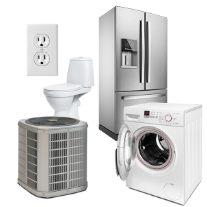A growing number of homeowners are lowering their energy costs by harnessing energy from the wind. Is this a good option for you? Here’s what you should know about small wind electric systems.
What They Do
Under the right circumstances, a small wind electric system can be one of the most affordable home-based renewable energy systems. If your area has enough wind resource, you could lower your electricity bills by between 50 and 90 percent. A small wind electric system can also help remote homeowners avert the high costs of having power lines extended to their locations. They can also enjoy the peace of mind that comes with knowing their power supplies will remain constant during extended utility outages.
How it Works
Wind results when the sun heats the Earth’s surface unequally. As wind rushes past, a small wind electric system’s turbines convert its kinetic energy into clean electricity. As the wind rotates the blades of a turbine, a rotor captures the kinetic energy, converting it into rotary motion that drives a generator.
A small home wind system can either stand alone, or it can be connected to the electric grid through a local power provider. Because they can remain off-grid if necessary, these systems are nice solutions for rural areas that have yet to be connected to an electric grid.
The Components
A wind electric system is basically a wind turbine mounted on a tower, which provides access to stronger winds. The setup also includes a small wind electric system, along with some critical balancing components.
Most of today’s small wind turbines are upwind, horizontal-axis machines with two to three blades made of fiberglass or another composite. The turbine’s energy output depends on the diameter of its rotor. Known as the “swept area,” this diameter determines exactly how much wind will be intercepted.
There are two standard types of towers: guyed and free-standing. Most home wind systems rely on less expensive guyed towers, which are easier to install. Because they require a minimum radius of one-half to three-quarters of the tower height, however, guyed towers demand substantial space.
Although they are more expensive, tilt-down guyed towers are easier to maintain and can be lowered during hazardous weather conditions.
Is it Right for Me?
While they can be an economical solution for many homeowners, small wind electric systems aren’t appropriate for everyone. To reap the benefits of one of these systems, you will need to get answers to some key questions, including:
- Is there enough wind in my area?
- Are tall towers allowed in my neighborhood or rural area?
- Is there enough space available for the system?
- How much I electricity do I need to produce?
To get answers to these questions, you will need to invite a provider to visit your area and evaluate your needs, landscape and capabilities. While they can be a cost-competitive alternative to solar panels, small wind electric systems can cost tens of thousands of dollars to install. Under the right circumstances, however, they can last up to 20 years.
2-10 HBW offers comprehensive warranty coverage to protect your biggest investment. Contact us today.








